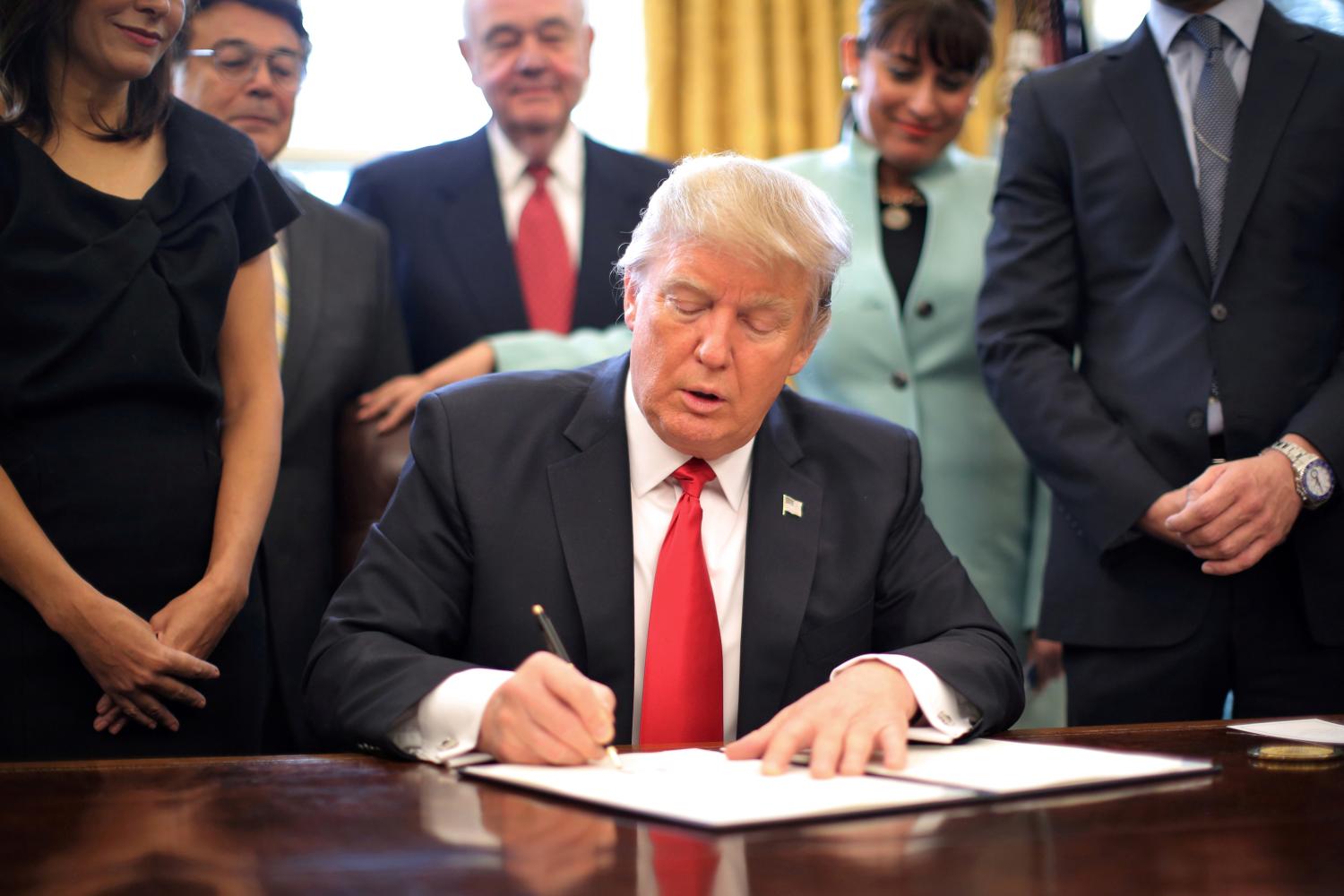This report is part of the Series on Regulatory Process and Perspective and was produced by the Brookings Center on Regulation and Markets.
In his first week in office, President Trump issued Executive Order 13771, which aims to “manage the costs associated with the governmental imposition of private expenditures required to comply with Federal regulations.” It requires that “for every new regulation issued, at least two prior regulations be identified for elimination, and that the cost of planned regulations be prudently managed and controlled through a budgeting process.”
At least since the Ford administration, there have been numerous efforts to require agencies to pay greater heed to analyzing the costs and benefits of major new regulations. While prospective benefit-cost analyses have achieved a role in regulatory policymaking, regulations have accumulated for decades because agencies make little effort to eliminate or revise existing burdensome regulations.
In “Evaluating the Trump administration’s regulatory reform program” (PDF), Ted Gayer, Joseph A. Pechman Senior Fellow and Vice President and Director of Economic Studies; Robert Litan, the Council on Foreign Relations; and Governance Studies Senior Fellow Philip Wallach seek to explain what President Trump’s executive order will mean in practice and identify the legal and practical challenges that administration officials responsible for implementing it will face.
The authors then consider the worst- and best-case scenarios for the Trump administration’s regulatory budget process and conclude by offering advice on how to make the most of this important opportunity.
They argue that although this regulatory budgeting is a tremendous undertaking that has the potential for meaningful and deep-reaching change, it is “plausible, but not inevitable” to end up as one of the worst case scenarios they outline and bog down and create a massive bureaucratic headache to go with the regulations that already exist.
“The promise of regulatory budgeting is that it asks both groups to furnish concrete, “scorable” ideas for cost savings that can be readily implemented in ways consistent with the law—and in fact says that if we cannot come up with these in practice, then new regulation must grind to a halt. … But if, as seems more likely, there are lots of opportunities to bring old regulations up to date with modern realities, and plenty of accumulated detritus to clear out, then the regulatory budget offers a much needed spur to action. It is up to the administration to carefully work this system out and realize this best-case scenario.”
Read the full report here || Keep track of the progress of Trump’s deregulatory agenda with our new interactive
Robert Litan is on the advisory board of the Committee for Economic Development and the Smith Richardson Foundation. With the exception of the aforementioned, the authors did not receive financial support from any firm or person for this paper or from any firm or person with a financial or political interest in this paper. With the exception of the aforementioned, they are currently not officers, directors, or board members of any organization with an interest in this paper.
The Brookings Institution is committed to quality, independence, and impact.
We are supported by a diverse array of funders. In line with our values and policies, each Brookings publication represents the sole views of its author(s).







